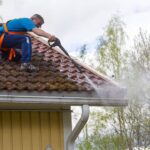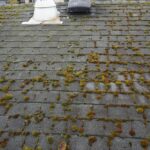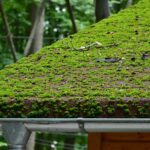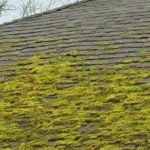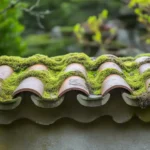If you’ve ever marveled at how your roof stays pristine amidst harsh weather, the secret lies in its maintenance. One key component is understanding how to seal roof vents. Ensuring roof vents are properly sealed not only prevents leaks but also protects the structural integrity of your home. By doing so, homeowners can avoid costly repairs and extend the lifespan of their roofs. This article will guide you through the process, offering an informative and optimistic approach.

Understanding the Importance of Roof Vent Sealing
Roof vents play a vital role in your roof system by allowing air to circulate and preventing moisture buildup. Failing to seal these vents correctly can lead to significant damage over time. Moisture can seep in, resulting in water stains on your ceiling, mold growth, and even structural damage.
Common Types of Roof Vents
Before diving into the sealing process, its crucial to recognize the types of roof vents:
- Ridge Vents
- Turbine Vents
- Static Vents
- Soffit Vents
Each type requires a unique sealing process to ensure optimal effectiveness.
Signs Your Roof Vents Need Sealing
Knowing when your roof vents need sealing is half the battle. Some signs include water stains on the ceiling, visible gaps around vent areas, and an increase in your home’s energy bills.
Why Regular Maintenance is Key
Routine roof maintenance ensures that any issues with your roof, including unsealed vents, are addressed promptly.
Preparing for Roof Vent Sealing
A thorough inspection is essential to assess the condition of your roof vents.
Tools You Will Need
Before sealing, gather essential tools like a ladder, caulking gun, sealant, and protective gear.
Step-by-Step Guide on How to Seal Roof Vents
- Assess the Roof and Vents: Check for any visible damage or debris.
- Clean the Area: Remove any dirt, debris, or old sealant around the vent area.
- Apply Sealant: Use a high-quality silicone or polyurethane sealant.
- Smooth the Sealant: Ensure an even application to prevent water intrusion.
- Inspect Your Work: Check the sealed areas for any gaps or flaws.
Following these steps will help you confidently seal your roof vents and protect your home.
Common Mistakes to Avoid
Avoid using incorrect materials and applying sealant too thin, as this can lead to leaks.
The Role of Professional Help
If sealing your roof vents feels daunting, consider hiring a professional for the job. Learn more about the importance of roof life.
Benefits of Properly Sealed Roof Vents
Proper sealing extends the lifespan of your roof, reduces energy costs, and prevents water damage.
Safety Tips to Keep in Mind
Always ensure you work safely and use the correct equipment when dealing with roof repairs.
Natural Causes That Affect Roof Vent Sealing
Weather elements, such as rain, wind, and UV rays, can deteriorate the seal over time, necessitating periodic checks and maintenance.
Tips for Maintaining Sealed Roof Vents
Regular inspections and cleaning can help prolong the integrity of your sealed roof vents.
When to Consider Replacing Roof Vents
If roof vents show significant signs of wear or damage, replacement may be more effective than sealing.
The Cost Factor
Understand the costs associated with sealing versus replacing roof vents to make informed decisions about your home’s needs.
Conclusion
Sealing roof vents is a practical and vital part of home maintenance. By understanding how to seal roof vents, homeowners can protect their home from unnecessary damage, ensure a longer lifespan for their roof , and maintain a healthy living environment.

Frequently Asked Questions (FAQs)
Why is sealing roof vents important?
Sealing roof vents prevents moisture-related damage and maintains home structural integrity.
When should I seal my roof vents?
Regularly inspect your roof vents every few years or after severe weather events for sealing.
Can I seal roof vents myself?
Yes, with the right tools and instructions, most homeowners can seal roof vents themselves.
For more insights on roof maintenance, explore how to protect and maintain your roof by visiting this guide on cleaning gutters.
This article contains affiliate links. We may earn a commission at no extra cost to you.




